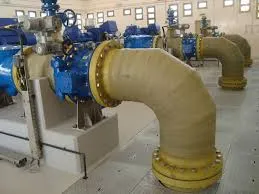
-
 Afrikaans
Afrikaans -
 Albanian
Albanian -
 Amharic
Amharic -
 Arabic
Arabic -
 Armenian
Armenian -
 Azerbaijani
Azerbaijani -
 Basque
Basque -
 Belarusian
Belarusian -
 Bengali
Bengali -
 Bosnian
Bosnian -
 Bulgarian
Bulgarian -
 Catalan
Catalan -
 Cebuano
Cebuano -
 China
China -
 China (Taiwan)
China (Taiwan) -
 Corsican
Corsican -
 Croatian
Croatian -
 Czech
Czech -
 Danish
Danish -
 Dutch
Dutch -
 English
English -
 Esperanto
Esperanto -
 Estonian
Estonian -
 Finnish
Finnish -
 French
French -
 Frisian
Frisian -
 Galician
Galician -
 Georgian
Georgian -
 German
German -
 Greek
Greek -
 Gujarati
Gujarati -
 Haitian Creole
Haitian Creole -
 hausa
hausa -
 hawaiian
hawaiian -
 Hebrew
Hebrew -
 Hindi
Hindi -
 Miao
Miao -
 Hungarian
Hungarian -
 Icelandic
Icelandic -
 igbo
igbo -
 Indonesian
Indonesian -
 irish
irish -
 Italian
Italian -
 Japanese
Japanese -
 Javanese
Javanese -
 Kannada
Kannada -
 kazakh
kazakh -
 Khmer
Khmer -
 Rwandese
Rwandese -
 Korean
Korean -
 Kurdish
Kurdish -
 Kyrgyz
Kyrgyz -
 Lao
Lao -
 Latin
Latin -
 Latvian
Latvian -
 Lithuanian
Lithuanian -
 Luxembourgish
Luxembourgish -
 Macedonian
Macedonian -
 Malgashi
Malgashi -
 Malay
Malay -
 Malayalam
Malayalam -
 Maltese
Maltese -
 Maori
Maori -
 Marathi
Marathi -
 Mongolian
Mongolian -
 Myanmar
Myanmar -
 Nepali
Nepali -
 Norwegian
Norwegian -
 Norwegian
Norwegian -
 Occitan
Occitan -
 Pashto
Pashto -
 Persian
Persian -
 Polish
Polish -
 Portuguese
Portuguese -
 Punjabi
Punjabi -
 Romanian
Romanian -
 Russian
Russian -
 Samoan
Samoan -
 Scottish Gaelic
Scottish Gaelic -
 Serbian
Serbian -
 Sesotho
Sesotho -
 Shona
Shona -
 Sindhi
Sindhi -
 Sinhala
Sinhala -
 Slovak
Slovak -
 Slovenian
Slovenian -
 Somali
Somali -
 Spanish
Spanish -
 Sundanese
Sundanese -
 Swahili
Swahili -
 Swedish
Swedish -
 Tagalog
Tagalog -
 Tajik
Tajik -
 Tamil
Tamil -
 Tatar
Tatar -
 Telugu
Telugu -
 Thai
Thai -
 Turkish
Turkish -
 Turkmen
Turkmen -
 Ukrainian
Ukrainian -
 Urdu
Urdu -
 Uighur
Uighur -
 Uzbek
Uzbek -
 Vietnamese
Vietnamese -
 Welsh
Welsh -
 Bantu
Bantu -
 Yiddish
Yiddish -
 Yoruba
Yoruba -
 Zulu
Zulu
Enhanced Durability with GRP Dual Lamination Products for Superior Performance and Longevity
Exploring GRP Dual Lamination Products for Enhanced Durability
In today's competitive industrial landscape, the need for innovative and durable materials has never been more critical. One such advancement in material technology is the development of Glass Reinforced Plastic (GRP) dual lamination products. These products offer improved durability, resistance to environmental factors, and versatility across various applications. By combining the robustness of GRP with advanced lamination techniques, manufacturers are creating solutions that meet the demanding needs of modern industries.
GRP, commonly known as fiberglass, consists of a composite material made from a polymer matrix reinforced with glass fibers. This combination results in a lightweight yet strong material that is resistant to corrosion and extreme temperatures. However, to further enhance its properties, the GRP dual lamination technique employs an additional layer of protection, typically through a second lamination of resin or another type of composite material.
The dual lamination process involves several stages. Initially, the GRP substrate is prepared and coated with a resin layer. This is followed by the application of a secondary composite layer, which can include additional glass fibers or other materials that enhance load-bearing capacity and wear resistance. The final step involves curing the laminated structure under controlled conditions, ensuring a solid bond that contributes to the overall durability of the product.
The benefits of GRP dual lamination products are manifold. First and foremost, they exhibit superior resistance to chemical and environmental degradation. In industries where materials are exposed to harsh chemicals, UV radiation, or moisture, such enhancements are critical to ensuring longevity. For example, in the marine sector, vessels constructed with dual laminated GRP can withstand the corrosive effects of saltwater, significantly extending their operational life.
grp dual lamination products for enhanced durability and ...

Moreover, the dual lamination process also improves the mechanical properties of GRP products. The enhanced strength and stiffness provided by the extra layer make these materials ideal for structural applications. Industries such as construction, automotive, and aerospace are increasingly utilizing dual laminated GRP components due to their lightweight design coupled with their high strength-to-weight ratio. This can lead to energy savings and improved efficiency in various operational settings.
Another significant advantage of GRP dual lamination products is their design flexibility. The lamination process allows for the incorporation of various surface textures and finishes, enabling tailored aesthetic and functional properties. Manufacturers can produce everything from smooth, glossy surfaces suitable for aesthetic applications to textured finishes that provide better grip and safety features.
Additionally, the sustainability aspect of GRP dual lamination should not be overlooked. The materials used in the lamination process can often be selected to promote recyclability, aligning with the growing emphasis on sustainability within the manufacturing sector. By opting for dual laminated products, companies can reduce their carbon footprint and contribute to environmental conservation efforts.
In conclusion, the development of GRP dual lamination products represents a significant step forward in material technology. Their enhanced durability, resistance to environmental challenges, superior mechanical properties, design flexibility, and sustainability make them a preferred choice in various industrial applications. As industries continue to search for innovative solutions to meet end-user demands and regulatory requirements, GRP dual lamination products will likely play a pivotal role in shaping the future of material science and engineering. Embracing these advancements can lead to more resilient structures, longer-lasting products, and a greener planet.
Latest news
-
Exploring the Benefits of Top Hammer Drifter Rods for Enhanced Drilling PerformanceNewsJun.10,2025
-
High-Precision Fiberglass Winding Machine for GRP/FRP Pipe Production – Reliable & Efficient SolutionsNewsJun.10,2025
-
FRP Pipes & Fittings for Shipbuilding - Corrosion-Resistant & LightweightNewsJun.09,2025
-
Premium FRP Flooring Solutions Durable & Slip-ResistantNewsJun.09,2025
-
Premium Fiberglass Rectangular Tanks Durable & Lightweight SolutionNewsJun.09,2025
-
Tapered Drill String Design Guide Durable Performance & UsesNewsJun.09,2025









